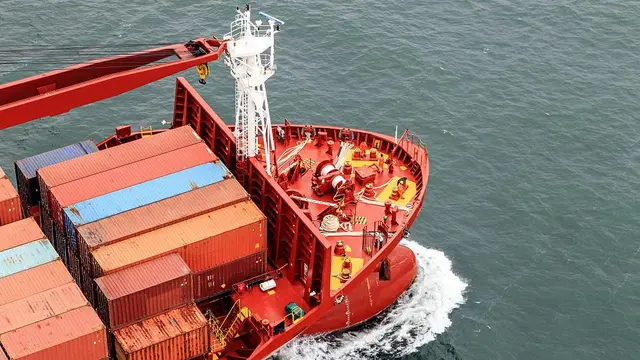The largest free trade agreement since the creation of the World Trade Organization is taking shape on the African continent where many developing and underdeveloped countries are concentrated.
With 44 African countries having signed the historic African Continental Free Trade Area (AfCFTA) agreement, an expected free trade bloc of 1.2 billion people with a total GDP of more than 2 trillion US dollars will come into force after half of the signatory countries complete domestic ratification procedures within 180 days.
It is a giant step forward for African integration and a boost to the recent sluggish economic growth though more concrete implementation is needed to achieve the ambitious goal.
A group photo of leaders at the 30th African Union (AU) Heads of State and Government Summit in Addis Ababa, Ethiopia, January 28, 2018. /VCG Photo.
A giant stage to boost intra-Africa integration
Compared with a high proportion of trade volume within other continents like the European Union and Southeast Asia, intra-Africa trade accounts for only 10 percent of all commerce on the continent, which is relatively low while Africa enjoys a high volume of trade with other continents.
Moreover, African companies need to pay more customs duties when they export to neighboring countries than when they export to Europe. Therefore, AfCFTA is aiming to create a single market with a free flow of goods, personnel and capital by removing 90 percent of the barriers to trade such as tariffs and import quotas and abolishing restriction on the free flow of goods and services between its members.
"Summon the required political will for the African Continental Free Trade Area to finally become a reality,” said Moussa Faki Mahamat, chairperson of the African Union Commission, at the AU summit after the historic agreement was signed.
The next step is for signatory countries to raise a list of 90 percent of products that won't be protected (from competition) from the onset, the sensitive products that will be protected for a certain period, and the products that are to be temporarily exempted from liberalization.
June 10, 2015: Egyptian President Abdel Fattah al-Sisi delivers a speech at the Tripartite Summit of Africa's three major regional economic committees: the Common Market for Eastern and Southern Africa (COMESA), the South African Development Community (SADC), and the East African Community (EAC), aimed at unifying them into one trade bloc in Sharm el-Sheikh, Egypt. /VCG Photo
In this regard, the most direct benefit would be better market access to boost tremendous business opportunities and ensure the previous African capital fund could circulate more inside Africa rather than flowing to other continents.
Doing business with neighboring countries will be easier than with countries across oceans. With the already matured Regional Economic Communities (RECs) like common customs and clearance mechanisms and efficient interconnection like the Nairobi-Mombasa Railway and Addis Ababa-Djibouti Railway, intra-Africa trade could generate more profit and business opportunities and ensure that no country is left behind in Africa's growth.
A united dream needs more concrete effort
It is not the first time for African countries to pursue economic integration and unite after winning national independence.
Since the 1991 Abuja Treaty set the goal and roadmap for economic communities, multiple regional blocks in Africa, known as RECs, have gradually emerged into greater integration of the existing RECs.
At the 2015 EAC-SADC-COMESA Tripartite Summit, the African Free Trade Zone was established. It became a truly transcontinental union ranging from Cape in South Africa to Cairo in Egypt, including a majority of African countries.
June 10, 2015: A group photo of African government leaders and delegates with the World Bank President Jim Yong Kim (2nd L) at the Tripartite summit of Africa's three major regional economic committees in Sharm el-Sheikh, Egypt. /VCG Photo.
However, the 44 countries signing the AfCFTA agreement do not include South Africa and Nigeria, the two largest economies, as well as several other emerging countries, posing a big question mark.
Can the agreement be implemented without their participation since Nigeria and South Africa play a dominant role in their respective regional blocs? Or could the AU minimize their concern that AfCFTA undermines local manufacturers and that the domestic market will become a dumping ground for finished goods?
From a practical perspective, many individual economies are small and easily affected by external conditions; some regional economic blocs are still not functioning effectively since many agreements weren’t put into practice. Missing or ailing infrastructure, excessive bureaucracy, endless queues at ports and borders are all long-existing obstacles in the way of building a pan-African FTA.
Prepare for potential China-Africa FTA negotiation
With the largest ever FTA taking shape, China should do more study and research about its framework, regulations, disputes settlement mechanism and more to seek potential cooperation through the FTA framework, especially for the FOCAC Beijing Summit this September and the 1st China International Import Expo in Shanghai this November.
Moreover, China’s proposals like international industrial capacity cooperation, the Belt and Road Initiative and finance frameworks like the AIIB also have strong support from African friends.
African Union chief Moussa Faki Mahamat (L) shakes hands with China's Foreign Minister Wang Yi after a joint press briefing in Beijing, February 8, 2018. /VCG Photo.
In 2017, China-Africa trade volume reached 170 billion US dollars. China has been the largest trading partner of many African countries for years.
However, growing trade deficits are gradually appearing and many African countries have a strong desire to export more goods to China, especially manufactured goods.
Still, China is at a new stage of further opening up and showing the intent to import more goods from all over the world.
Also, the level of Chinese investment and personnel in Africa is growing.
Therefore, minimizing the risks and taking good advantage of ongoing FTA talks are quite important and create mutual benefit for China and African countries.
It is necessary to do enough preparation for potential dialogue with both regional economic communities and AfCFTA at large.
(CGTN)
 简体中文
简体中文





